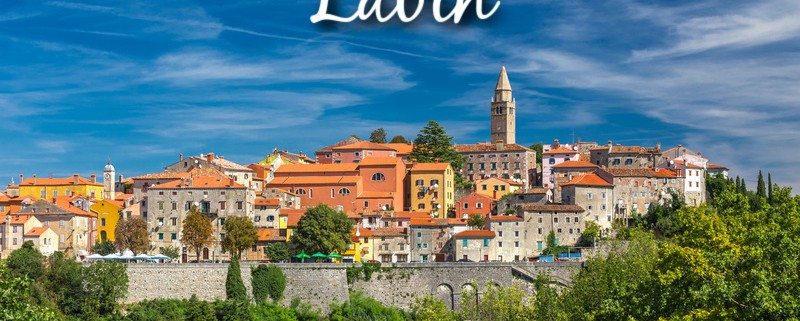
The small town of Labin is located on the western side of the peninsula of Istria, slightly inland from the coastal resort of Rabac. Partly a medieval hilltop town with a long history, Labin and the surrounding area was an important place in the 20th century as it was the site of four mines (although mining heritage stretches back further for hundreds of years); these all closed in the 1980s. These days, the historic part of the town up the hill (the more modern part is at the bottom) is a pretty place to visit if you’re touring the lesser-known spots in Istria. The population of the town stands at just under 6,000 people.
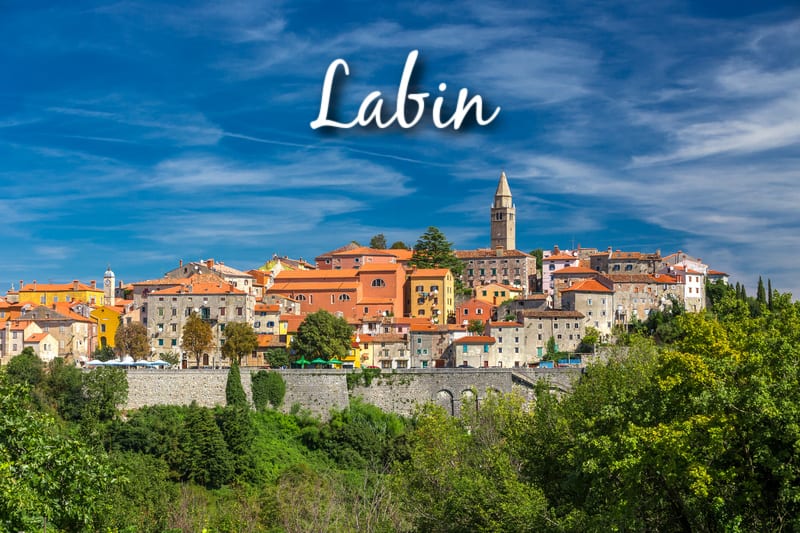
History of Labin
In Roman times, a settlement was located here that was named Albona. Labin’s history follows much of the rest of Istria although it was one of the first Croatian towns on the peninsula.
As we’ve mentioned, mining was big business around these parts – and the miners involved also played an important part in Labin’s history. On 2nd March 1921, miners took control of the mine to protest for better working conditions – an act that then evolved into an anti-fascist movement, with fascism on the rise in Istria at the time. (Istria at the time was part of Italy, as it was given to the Italians after World War I.) The independent “Republic of Labin” was declared and the miners organised their own government and began to run the mines themselves. However, Italian military intervention suppressed this “uprising” on 8th April 1921 and the miners were arrested although they were later freed after a trial. This event is considered to be one of the first anti-fascist protests in Europe.
Getting There
To reach Labin from outside Croatia you would fly to Pula Airport, about 40km southwest of the town. Brioni and FILS operate shuttle bus services (they operate on alternate days) from the airport to the coastal town of Rabac, a line which makes a stop in Labin. For more options, take the frequent shuttle bus from the airport to the main bus station in Pula and then take another bus from here to Labin. There are reasonably frequent daily buses from Pula to Labin; journey time is 55 minutes.
There are bus services to Labin from elsewhere in Istria (such as from Rovinj) by bus companies Arriva and Brioni. There are also bus services to the town from further afield, such as from Zagreb. The bus from Zagreb takes just over 4 hours.
Driving-wise, there’s a direct road from Pula, the D66. If travelling from the other direction, you can use this same road to make the journey from Opatija to Labin.
What to See and Do in Labin
Head to the old town part of Labin to enjoy the pretty little cobbled streets, beautiful squares, old palaces (such as the Negri Palace) colourful old buildings. As you head to the old town you will pass through Porta Sanfior which were the main town gates, erected in the 16th century, Above the gate you will see the Labin coat of arms.
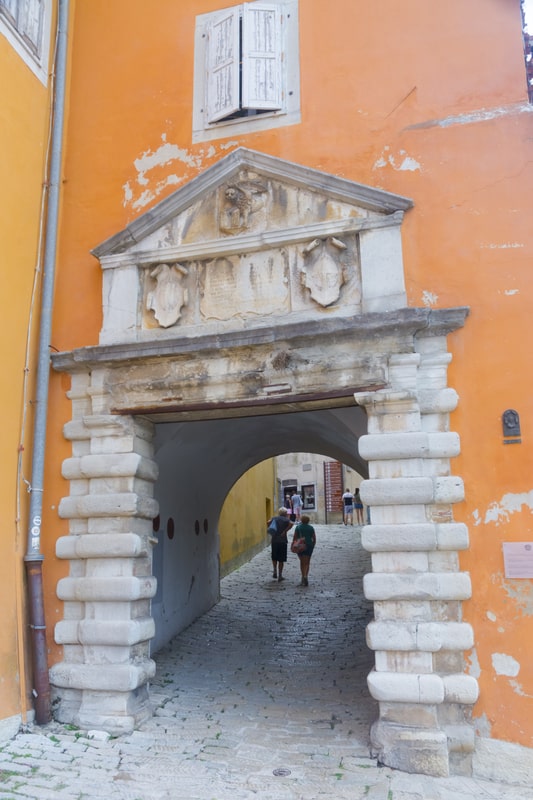
Head to the Fortica Viewpoint for stunning views all around, including to the Adriatic.
The City Museum (housed in the 18th-century Battiala-Lazzarini Palace) of course contains exhibits of items of interest from the local area – including stone items from the 1st and 2nd centuries. Visitors to the Museum delight in the fact that there’s a reconstruction of the coal mine underneath the museum. Make your way through the tiny space to get a feel for how miners spent their days.
Park Dubrova is a sculpture park that is located slightly north of town. In an area of beautiful countryside and amidst lovely greenery stand around 70 sculptures. These sculptures have been created during the Mediterranean Sculpture Symposium that is held each year; it was first held in 1970. The park is open 24 hours a day, and entry is free. It’s a peaceful and relaxing place to spend an afternoon.
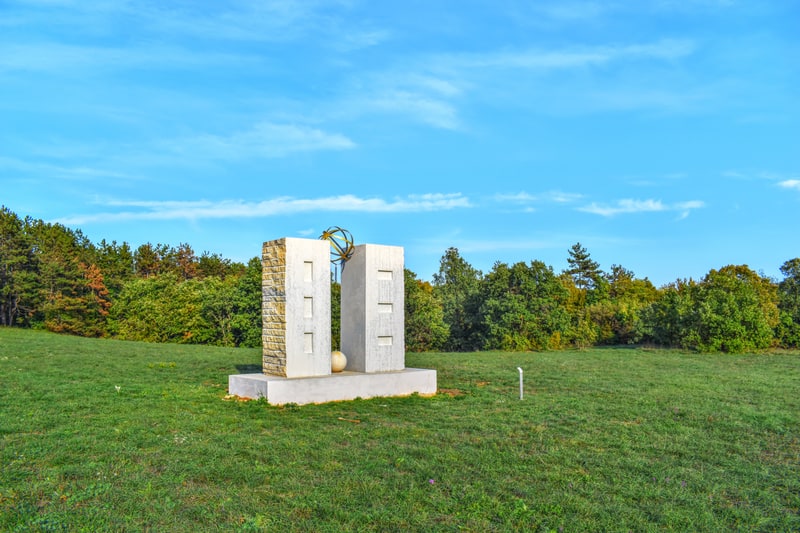
As mining used to be such an important industry in and around Labin in the days of Yugoslavia, you can undertake a mine tour which is combined with a tour of Litija mine over the border in Slovenia.
There are a number of wineries in the wider Labin area which would make the perfect accompaniment to a few hours spent in the town. Try Bacac Winery or Vina Juricic.
Eating and Drinking in Labin
Restaurant Peteani in the hotel of the same name is one of the smartest choices for dining here. Showcasing typically Istrian cooking with a modern twist, there’s a great ambience and a gorgeous view here too.
Pizzeria Rumore is a great option in the old town, serving highly-rated pizzas.
You won’t miss Velo Cafe on Labin old town’s main square – it’s a great place to sip a coffee and people watch.
Pizzeria Pineta is a comfortable, relaxed place that of course serves tasty pizzas (and pasta dishes) but other typically Istrian and Croatian dishes.
Markus was established in 1972 and offers a wide-ranging menu featuring typically Istrian and Mediterranean dishes. It is the restaurant’s steak dishes, however, that it is best known for.
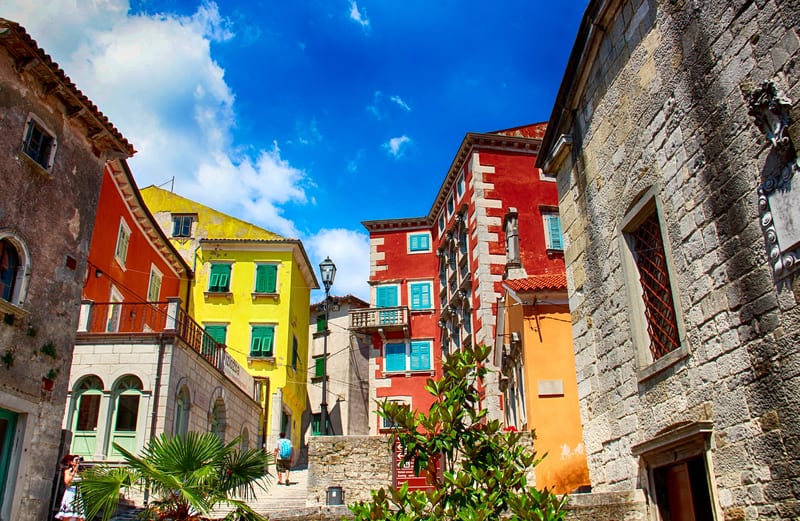
Events in Labin
The Labina Art & Tolerance Festival takes place in mid-May each year with music, theatre performances and more.
Accommodation in Labin
There are two hotels in Labin, the Hotel Peteani and La Loggia which are both four-star. The former offers smart, comfortable accommodation in the modern setting of a small hotel. (It is also home to the above-mentioned, popular Restaurant Pateani.) La Loggia
Campers can opt for the Floria Glamping Garden which offers four-star accommodation in very well-appointed bell tents. You won’t believe the amenities in them – bathrooms (yes, really!), flat-screen TVs, air conditioning… There’s also a shared outdoor pool and you can even take part in on-site group yoga lessons. Mobile Homes Romantik – which also offers a shared outdoor pool – is another camping choice.
Apartments, holiday homes and villas abound in this part of Croatia – take a look at what’s available on Booking.com or use the map below to search for accommodation.
You can of course also consider accommodation in nearby Rabac.
More info
You can learn more about the town on the Rabac – Labin Tourist Board website and the Istrian Tourist Board page on Labin.
